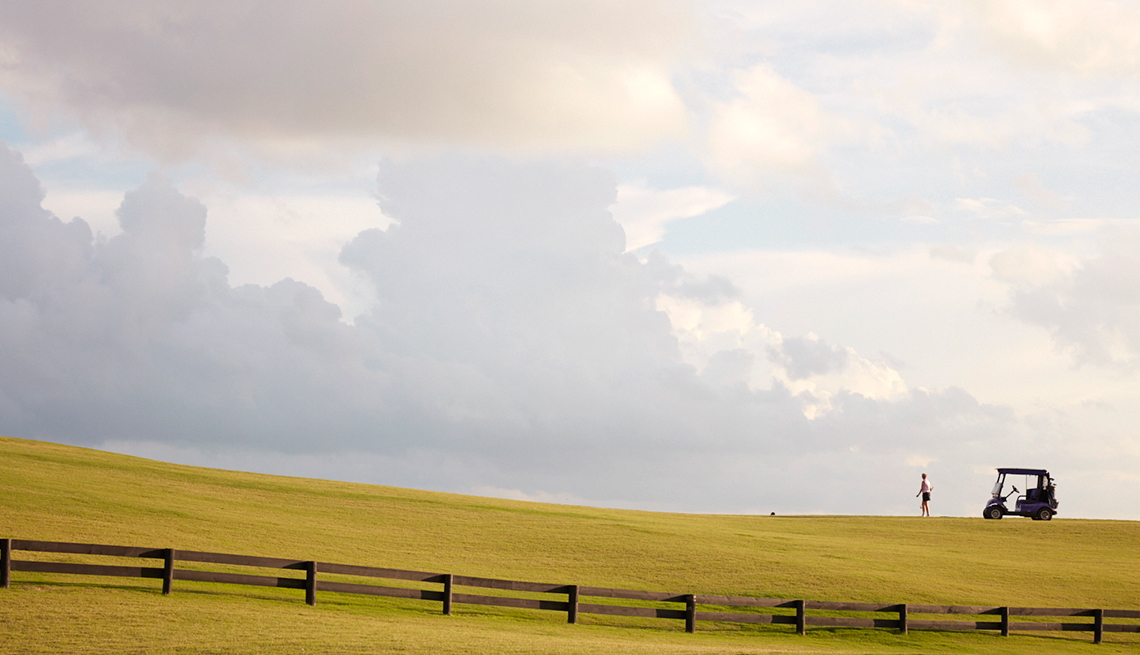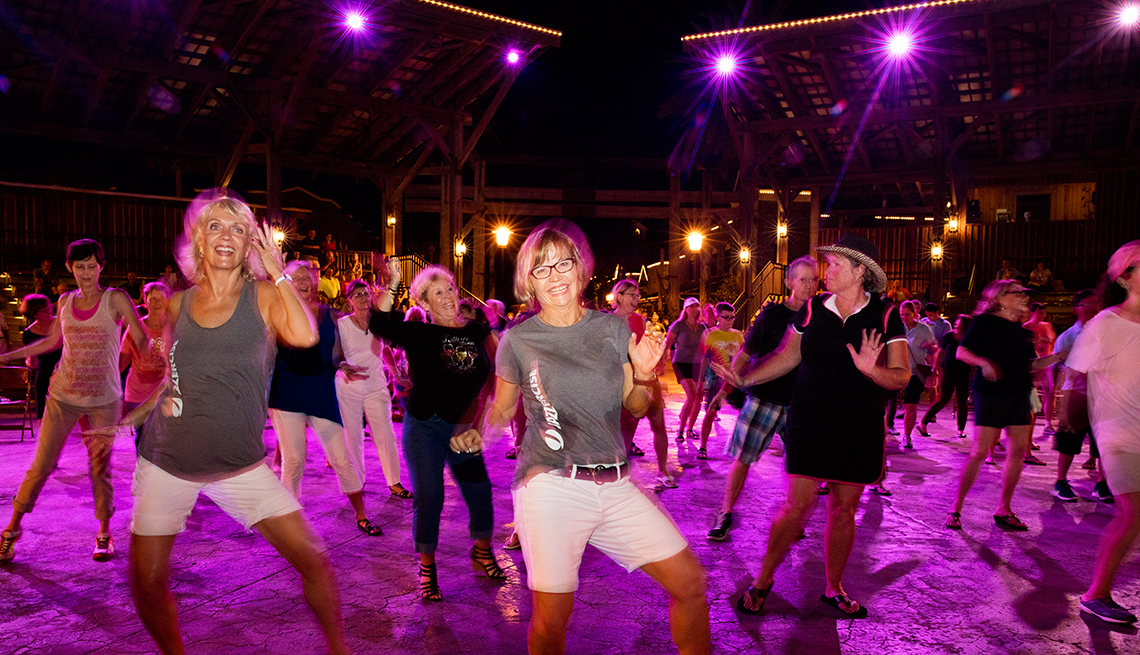A Permanent Vacation Under the Florida Sun
At The Villages, retirement is a never-ending party
MEN AND WOMEN in bright green attire are carrying plastic cups of beer and folding chairs through the streets of the Villages. It's the Tuesday before St. Patrick's Day, and a street festival is either winding up or winding down in Lake Sumter Landing, one of three tidy town squares that serve as social hubs and de facto downtowns for this retirement community in central Florida. The palm-edged square itself is full of empty chairs; a few pockets of revelers toast there in the afternoon sun. But as the shadows lengthen, the square fills, an Irish band appears and lines begin to grow at the four rustic "Bait Shacks" that function as open-air bars. "A party every nite" is painted on the side of each one.
Online Community: Join the Conversation - At what age is a good time to retire?
Happy hour comes early to the Villages, home to more than 110,000 people and the largest master-planned city in America. It's been the fastest growing metro area in the U.S. for several years. You (or your spouse) need to be at least 55 to own a home in TV, as locals call it; the median age is 67, and those under 19 are only permitted to visit for 30 days per year. What it's famous for, in addition to its vast scale (the development now covers about 40 square miles across three counties) and dearth of racial diversity (98.2 percent of TV residents are white) is its commitment to having a good time. "It's Disneyland for adults" is the ebullient tagline residents like Barry Brooks, 72, inevitably repeat when asked why they chose to live here.
'If you're bored here, it's your fault'
Brooks, a former college halfback with a russet tan and a yen for golf and fishing, is your prototypical "active adult." Strike up a conversation with him in a Village watering hole and you'll quickly get, along with a photo tour of his Kentucky hometown and a selfie with Donald Trump, a glowing rundown of the amenities that keep residents like him active. Among them: 81 swimming pools, 11 softball fields and 2,500 resident clubs for everything from model railroading to home brewing. "People live in the Villages because they want to do something," he says. "If you're bored here, it's your fault."
But the dominant pastime, in terms of geography, is golf. The Villages is best understood not as a town but as a peopled golf-delivery landscape: 36 nine-hole executive courses and a dozen larger country club courses are embroidered into the suburban culs-de-sac, with some 65,000 golf carts—many gaudily customized to resemble old-timey jalopies—serving as the primary mode of transportation. The homes, which range from under-$200s two-bedroom villas to million dollar-plus McMansions, nestle in a manicured ocean of greens; like Cheever's suburban swimmer, you could golf from one end to the other, 36 holes a day, for 15 days without repeating a hole.
'It's like being a kid in a candy store'
Like the other Disneyland, the Villages is best appreciated with a certain suspension of disbelief. Venturing beyond the borders of the development is called "going outside the bubble," says Greg Thomas, 66, who moved here with his wife, Dawna, 61, from Virginia Beach, Va., in 2012, and still seems blissfully dazzled at his good fortune. "It's like being a kid in a candy store," Greg says. "And then you get sick from all the candy."
"But in a good way," Dawna quickly adds.

Gregg Segal
The Villages residents can play 36 holes of golf a day, for 15 days, without ever repeating a hole.
Unlike her more recreation-focused neighbors, Donna Kempa, 56, still has a foot in the real world: She works part time as a financial auditor for a western New York health insurer. While husband Tony, 72, plays softball with pals, she telecommutes from a home office in their five-bedroom house. She's also the treasurer for the POA, or Property Owners' Association, which is the closest thing to a watchdog organization Villagers have.
Like most POA members, Kempa loves TV, but not quite as uncritically as many fellow Villagers: Sometimes she misses the restaurants of her old hometown, the opportunity to hang out with younger people. And something else: She wonders about the future. "I worry about sustainability," Kempa says. "What's going to happen when the baby boomers are done with this? What will happen to this place?"
Last year, the Villages sold more than 2,200 new homes—a huge amount, and enough to keep its ranking as the best-selling master-planned community in the nation. But the figure has declined for the last several years. Blechman observes that the current young retirees coming to the Villages are "the last of the lucky pensioners," since it takes a healthy regular income to maintain the permanent-vacation lifestyle for years, or decades. In the uncertain age of the 401(k), golf-centric retirement meccas like this may fade. "These places will turn into necropolises," he predicts. "All utopias fail."
Ah, but that's a problem for tomorrow's Villagers, whoever they are. For now, with a sun setting over man-made Lake Sumter and the outdoor bartenders mixing mudslides, it's time to grab a stool and watch the Villages Twirlers and Drum Corps—a troupe of majorettes in full uniform—parade through the square like the world's oldest high school marching band, batons flashing in the twilight. Roll your eyes at this if you must. Or smile and clap along.
"It's a made-up place," Komoroske says. "But the people are real."


